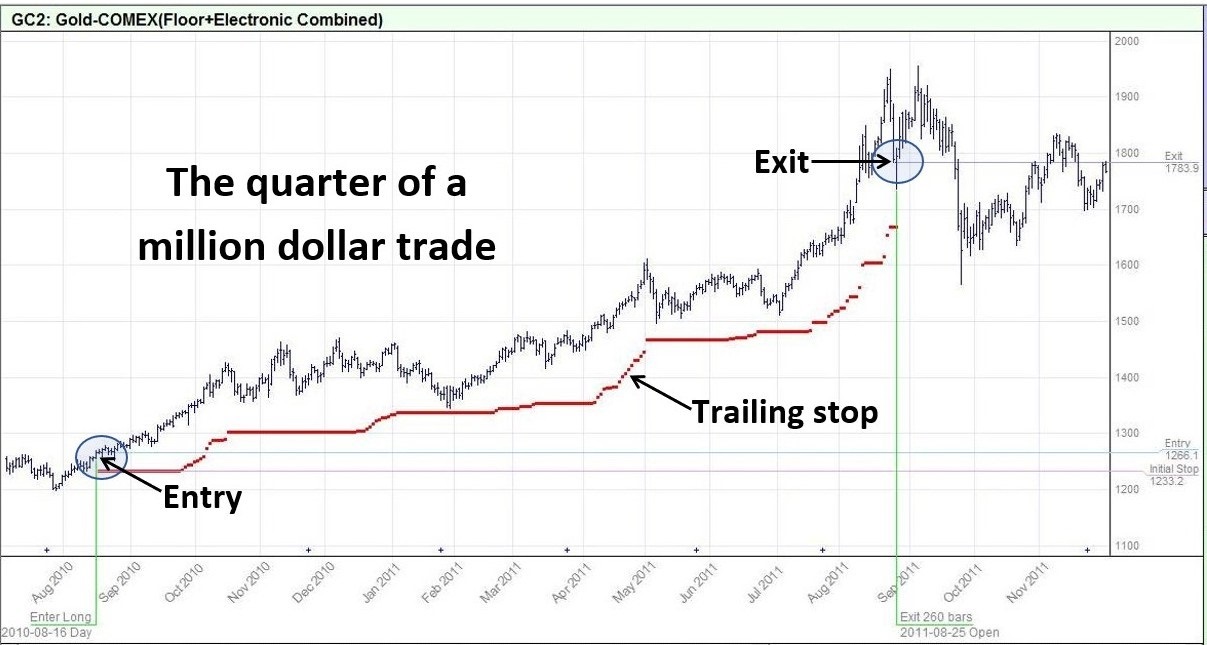 I remember it like yesterday…
I remember it like yesterday…
The date was 17 June 1999, and the dealing room was unusually quiet. A big announcement was pending… one that would turn my life and career inside out.
You see, my employer — Bankers Trust (BT) — was no longer.
A takeover by Deutsche Bank had lowered the curtain on a Wall Street titan.
It’s amazing how quickly a situation can change. BT was the envy of many in the mid-1990s…a financial juggernaut at the top of its game. But it was all over just a few years later.
And that’s life in the financial markets — the ‘unthinkable’ often becomes reality.
Two days ago, I told you about a defining moment in my career. It involved using a set of rules to deal with a fast moving situation. This was when I knew I’d make it as a trader.
Today I’m going to tell you about my most satisfying trade. This trade took place a few years after leaving BT. It’s a trade many people told me was impossible for a private trader.
But before I get to that, here’s why I went out on my own…
A new beginning
With my employer now in the hands of a rival bank, my colleagues and I were waiting to hear our fate. Some traders sat quietly, while others joked and passed around a football.
A row of meeting rooms ran alongside the trading floor. This was often a place for discussing trade ideas with colleagues. We’d also be told our yearly bonuses in these rooms.
But today, they were home to new management.
 One by one, the old department heads walked us to a room. The meetings with our new overlords were brief. After a short introduction, we’d hear whether or not we still had a job.
One by one, the old department heads walked us to a room. The meetings with our new overlords were brief. After a short introduction, we’d hear whether or not we still had a job.
The glass panelled offices were like goldfish bowls — it made for a grim spectacle.
A trend quickly began to emerge. In my area, most of the senior traders were being let go. My prospects of going home with a job were fading by the minute.
It was around midday when I got the tap on the shoulder. And the decision was swift — I was officially redundant. My role didn’t fit the plans of the new order.
I was 29 years old and out of work. It felt like the end of the world.
It’s funny looking back and joining the dots.
The end of BT was actually a golden opportunity… it was my chance to go it alone. And I’ve been my own boss ever since. I just needed that initial nudge outside of my comfort zone.
This is also where I made a big transition. I went from trading the bank’s money, to trading my own.
Trading full-time for yourself is different to trading for a bank. It’s like walking the high-wire without the safety net of a regular income — albeit an insecure income.
The private trader is in a constant cycle of risking capital to make capital. They need to make enough money to live AND grow their account. Anything less is treading water at best.
I’ve made a lot of trades in the years since leaving Bankers Trust. Many of them were nothing special — just business as usual. Occasionally though, one will stand out above the others.
This is one of those trades…
The super profit
Okay, let’s start with some background…
In 2007, I began developing a new algorithmic trading system for the futures markets. The aim was to trade medium-term trends that could last for around 18 months.
Many people told me that futures were too risky to trade for more than a day or two. They said volatility was a killer in futures trading. In their view, I was out of my depth.
But I didn’t agree.
You see, markets trend… and futures are just another way to take a position.
So on 16 August 2010, the system gave me a signal to buy gold futures. It was no different to any other entry order, and I took the trade without a second thought.
A critical element of all my trading systems is the stop-loss. This is my exit point if a trade isn’t working. A stop-loss strategy is a key rule for just about every successful trader.
For this trade, my risk was $18,483 — that’s what I stood to lose if it was unsuccessful.
So here’s what happened next…
The trade got off to a good start, and within two months I was up about $75,000. Many traders would be quick to lock in this sort of gain — the urge to take a profit can be strong.
But when you have a system, it’s all about the rules.
Two of my key trading rules are:
- Cut losses relatively early, and
- Let profitable trades run
So that’s exactly what I did.
The result was amazing: Gold ran, and ran, and ran. In fact, it ran for 12 months. So much for the naysayers who said futures were too volatile to trade medium-term!
This brings me to the trade’s exit…
Now, many people struggle when it comes to selling. All too often, I hear stories of traders getting out way too soon. Another problem is they hold a good trade all the way back down.
A key part of successful trading is knowing when to exit a trade.
And after 12 months, it was time to lock in my profit.
Check this out:

I turned $18,483 of risk into a profit of a quarter of a million dollars.
That’s more than 13-times the initial risk, or a 1,300%-plus payoff.
Now, this isn’t my most profitable investment. Nor is it my largest trade position.
But this trade is special because it shows the power of trading rules… the same sort of rules I’ll begin explaining tomorrow… the same rules that I want you to make your own.
Many people said this sort of result was impossible. And I can understand why.
You see, gold didn’t rise in a straight line. There were numerous pullbacks along the way. These have a habit of shaking traders out of their positions and limiting their potential profit.
But a set of trading rules could make all the difference…
It could give you the confidence to stay on big trends, and the know-how to exit your trades with consistency. The right rules could also help you resist the urge to take profits too soon.
I know the power of this first hand. It’s what makes super profits possible.
 At last, after 30 years of cracking the code in the markets, Jason McIntosh is ready to release his trading secrets directly to you. Go to www.motiontrader.com.au/tradinggame now to get Jason’s free training, so you could learn how to duplicate his system.
At last, after 30 years of cracking the code in the markets, Jason McIntosh is ready to release his trading secrets directly to you. Go to www.motiontrader.com.au/tradinggame now to get Jason’s free training, so you could learn how to duplicate his system.





